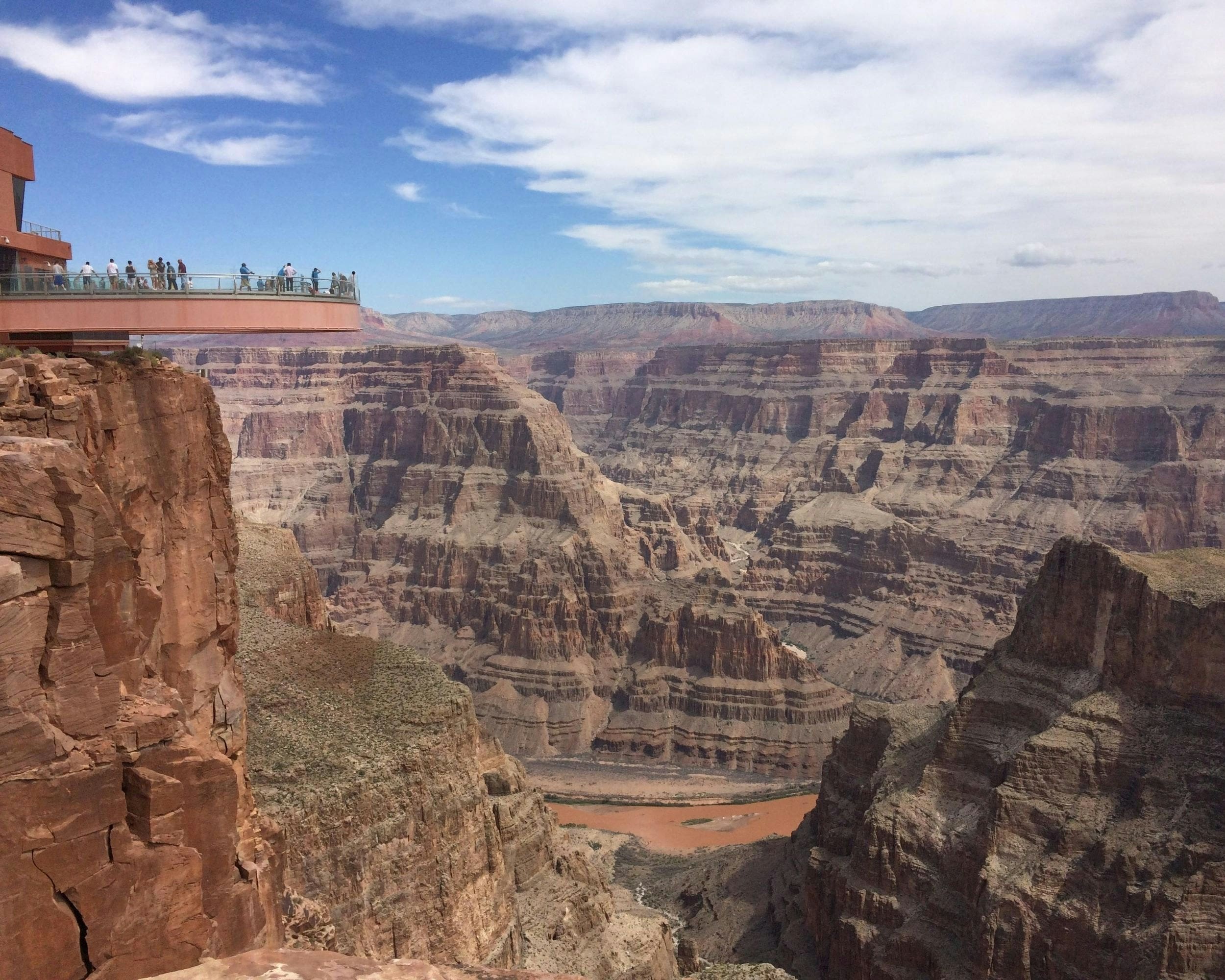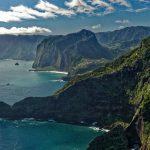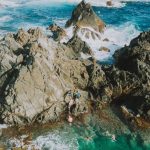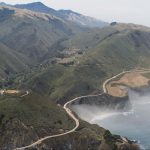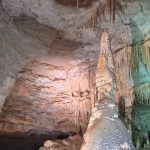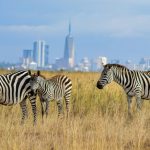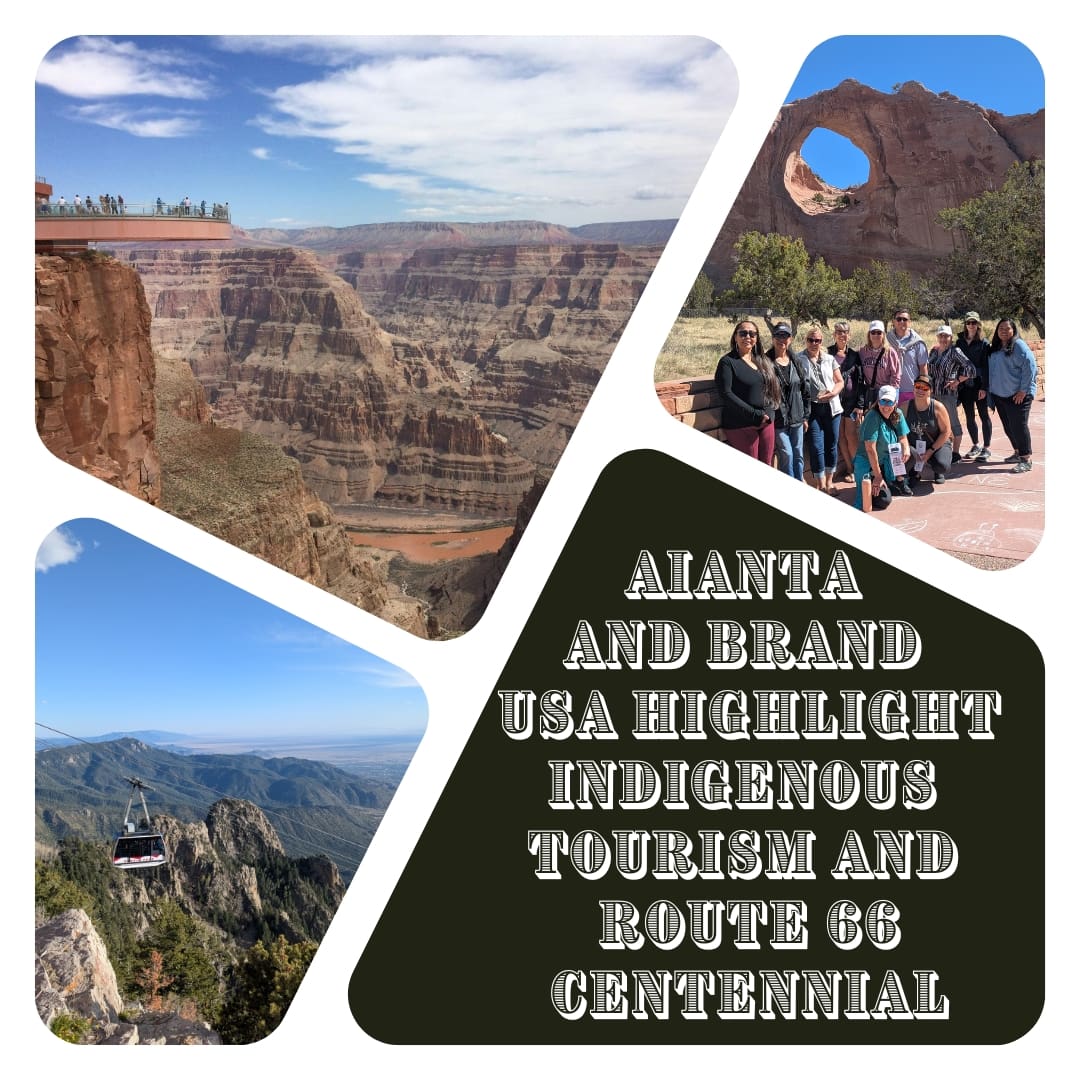
Eilish Vicencio-Heap
The American Indian Alaska Native Tourism Association (AIANTA) and Brand USA hosted a six-day FAM highlighting the 2026 centennial of Route 66 and opportunities to engage in Indigenous tourism along the way.
Beginning in Las Vegas and travelling through Arizona and New Mexico, the FAM focused on immersive experiences in the Indigenous communities along Route 66, the historic highway that follows the path of an ancient Indigenous trade route.
The itinerary ranged from braving the cantilevered Grand Canyon Skywalk and walking among fossilized dinosaur tracks to viewing ancient petroglyphs and riding a cable car up Albuquerque’s Sandia Mountains. Participants enjoyed local cuisine such as a traditional Hopi dinner and Navajo tacos, met artists on the Hopi Arts Trail including basketweaver Iva Honyestewa and silversmith Duane Tawahongva, and visited landmarks like the Cameron Trading Post, Window Rock Tribal Veterans Park and the Indian Pueblo Cultural Center.
The trip demonstrated how tourism, executed responsibly, can yield benefits beyond economic prosperity by playing a role in cultural preservation, as well as the importance of relationship building in changing perspectives and increasing allyship. As Tony Skrelunas, executive director of the Navajo Nation Division of Economic Development, told the group, “conscious tourism helps save our culture.”
Conscious tourism when visiting Native American homelands and reservations includes the understanding of visiting sovereign nations with distinct cultures, languages, rules and regulations. It is recommended to research the areas and communities you will be visiting before the trip, and to ask upon arrival where picture-taking is permitted. For trip-planning resources, visit nativeamerica.travel and aianta.org.
During the FAM, Travel Courier sat down with participants to get their take on US travel, Indigenous tourism and their favourite part of the trip.
- Alida Lio, The Travel Agent Next Door (AL)
- Cindy Beamont, Direct Travel (CB)
- Claudine Nichilo, La Maison du Voyage (CN)
- Iola Panetta, The Travel Agent Next Door (IP)
- Kristina Ziegler, Stonetown Travel (KZ)
What clientele would enjoy this type of trip?
AL: Anyone who is adventurous.
CB: Adventure-seekers, especially couples or two people.
CN: Motorcyclists or road-trippers, especially with a partner for a 10-day trip. Also, culinary travellers.
IP: A mature, settled, affluent clientele who is open-minded.
KZ: No particular age range, just anyone interested in learning about Indigenous cultures and history, and the many tribes and how they differ from one another.
What have you learned about Indigenous tourism?
CB: How the people are so spiritual, and how integrated the communities are.
CN: The cultures are family-oriented in such a beautiful way. I learned about their focus on Mother Earth, and how female-oriented and matrilineal they are.
KZ: Travellers need to learn how to respect the cultures in each area and each tribe’s rules. For example, we learned through our guides where it is appropriate to take photos and where it is not.
How are your USA sales going? Are you expecting any changes?
CB: Some corporate travellers are still going to the United States for business, but some are canceling. I don’t think anything will change until the political temperature changes.
CN: The 100th anniversary of Route 66 in 2026 will help — I have clients who are asking about it. The Brand USA Canada Connect event was great and the American partners were so welcoming.
IP: The United States has never been one of my top destinations but since January 2025 I have noticed a drastic decline in US requests. Over the Christmas holidays I had requests which are now on hold. Some as a political stance, and some because they don’t know how Americans will receive them.
I would promote this type of trip as Indigenous tourism — it is nothing to do with Canada or the United States. It’s an experience where you learn about the cultures that existed before Canadians and Americans.
AL: I often sell pre or post-cruise flights and have not seen a drop in that, though I have seen people’s paths change slightly towards Mexican trips. But I would also promote this type of trip as Indigenous tourism.
KZ: I have definitely seen a decrease in requests for USA travel. I think it’s important that, when it’s time, we educate clients that we feel welcome here and the area has so much to offer. As travel agents we’ll be able to get a good sense of when the time is right. There are so many unknowns and it will be interesting to see how 2025 sales turn out.
What was your favourite part of the trip?
AL: I can’t pick just one! Little Colorado River Gorge was one of many.
CB: Seeing the dinosaur eggs at Dinosaur Tracks.
CN: I really liked the Navajo Nation Museum and Library. We listened to a Navajo singer who also taught us dancing and shared stories from her grandmother. It was so emotional. I also loved the food throughout the trip, especially the frybread!
IP: It’s a toss-up between the Grand Canyon and Little Colorado River Gorge. I found the Little Colorado River Gorge more peaceful. What left an impression was how little of the river is remaining after drying up.
KZ: One of the most memorable places was Dinosaur Tracks. It was amazing when the guide pointed out dinosaur remnants and bones and they were so clear. I also loved Coalmine Canyon.
